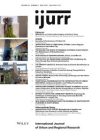In this article I argue that the US public housing policy, as codified by the Quality Housing and Work Responsibility Act of 1998 (QHWRA), is helping to reconfigure the racial and class structure of many inner cities. By promoting the demolition of public housing projects and replacement with mixed‐income housing developments, public housing policy is producing a gentrified inner‐city landscape designed to attract middle and upper‐class people back to the inner city. The goals of public housing policy are also broadly consonant with those of welfare reform wherein the ‘workfare’ system helps to bolster and produce the emergence of contingent low‐wage urban labor markets. In a similar manner, I argue that public housing demonstration programs, such as the ‘Welfare‐to‐Work’ initiative, encourage public housing residents to join the lowwage labor market. Although the rhetoric surrounding the demolition of public housing emphasizes the economic opportunities made available by residential mobility, I argue that former public housing residents are simply being relocated into private housing within urban ghettos. Such a spatial fix to the problems of unemployment and poverty will not solve the problems of inner‐city poverty. Will it take another round of urban riots before we seriously address the legacy of racism and discrimination that has shaped the US city?
Details
Written by:
Jeff R. Crump
Digital Object Identifier (DOI)
10.1111/1468-2427.00438
About DOI
Read full article as PDF
Read full article as HTML
See the references for this article
